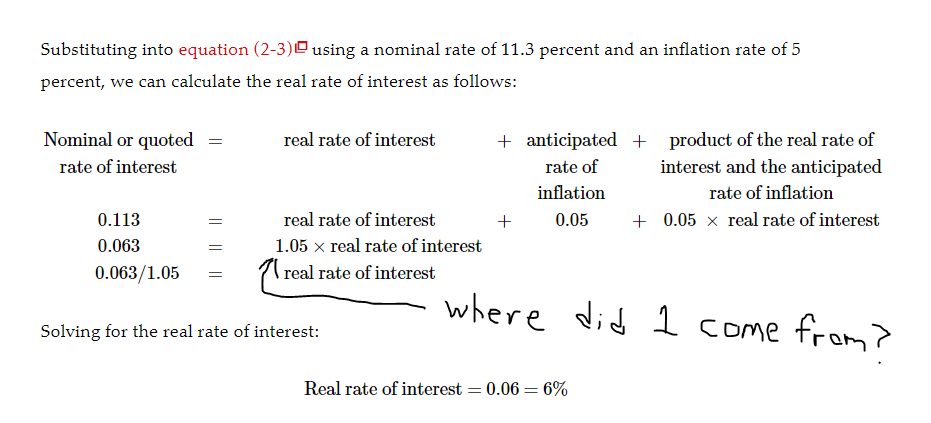Answered step by step
Verified Expert Solution
Question
1 Approved Answer
Hello, I am confused by this example of the fisher effect equation from my finance textbook. It seems to me that you would solve algebraically
Hello,
I am confused by this example of the fisher effect equation from my finance textbook. It seems to me that you would solve algebraically to find the real rate of interest, subtracting the anticipated rate of inflation from the nominal rate of inflation and then solving for X. If that is the case though, where did the 1 in "1.05 x real rate of inflation" come from? Perhaps I am not getting something here.

Step by Step Solution
There are 3 Steps involved in it
Step: 1

Get Instant Access to Expert-Tailored Solutions
See step-by-step solutions with expert insights and AI powered tools for academic success
Step: 2

Step: 3

Ace Your Homework with AI
Get the answers you need in no time with our AI-driven, step-by-step assistance
Get Started


